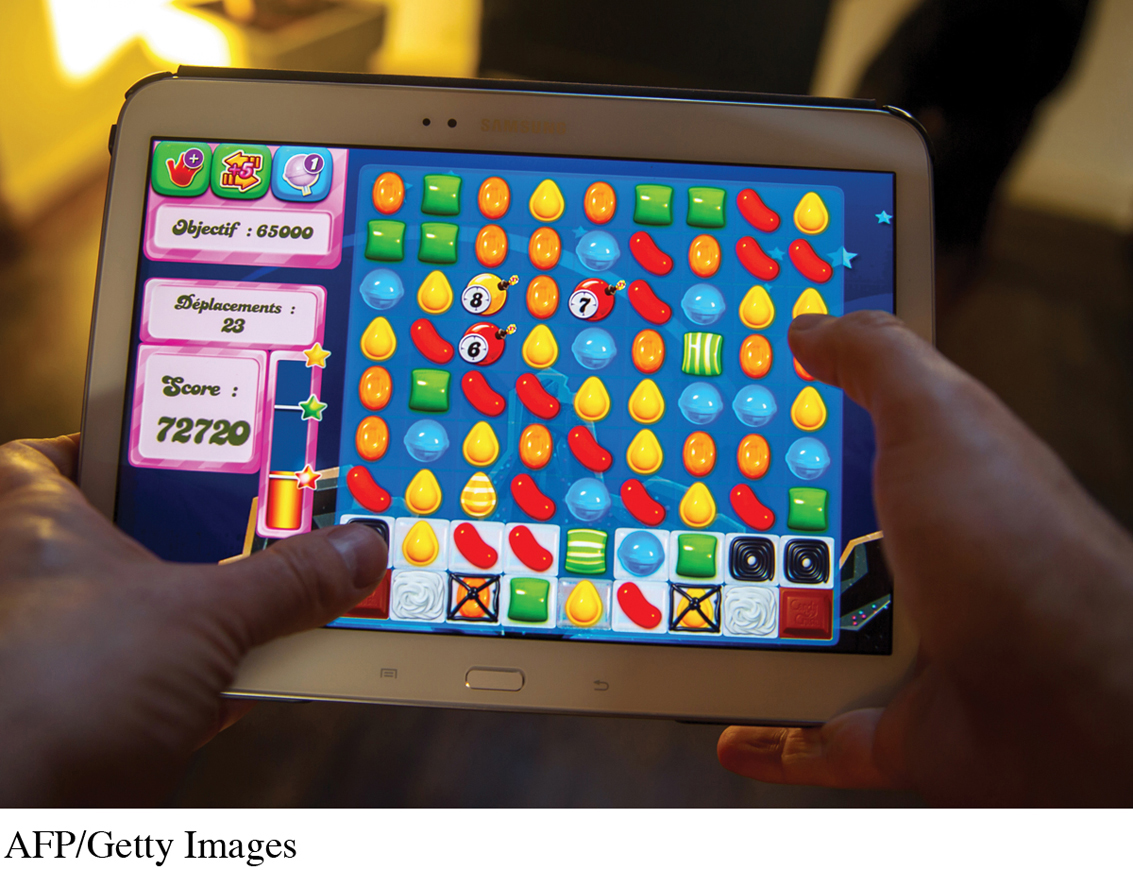The Internet Transforms Gaming
With the introduction of the Sega Dreamcast in 1999, the first console to feature a built-
The ability to play online has added a new dimension to other, less combat-
The Internet enabled the spread of video games to converged devices, like tablets and mobile phones, making games more portable and creating whole new segments in the gaming industry. The connectivity of the Internet also opened the door to social gaming, virtual worlds, and massively multiplayer online games.
MMORPGs, Virtual Worlds, and Social Gaming
It is one of the longest acronyms in the world of gaming: massively multiplayer online role-
The fantasy adventure game World of Warcraft is the most popular MMORPG, peaking at 12 million subscribers in 2010 and leveling off to 7.1 million subscribers in 2015. Users can select from twelve different “races” of avatars, including dwarves, gnomes, night elves, orcs, trolls, goblins, and humans. To succeed in the game, many players join with other players to form guilds or tribes, working together toward in-
MMORPGs like World of Warcraft and simulations like Second Life are aimed at teenagers and adults. One of the most overlooked areas (at least by adults) in online gaming is the children’s market. Club Penguin, a moderated virtual world purchased by Disney, enables kids to play games and chat as colorful penguins. Disney later developed additional Club Penguin games for handheld players. Toy maker Ganz developed the online Webkinz game to revive its stuffed-
Online fantasy sports games also reach a mass audience with a major social component. Players—
The increasingly social nature of video games has made them a natural fit for social networking sites. Game apps for Facebook have drawn millions of fans. London-

THE GAMEMAKER KING has made massive casual-
Convergence: From Consoles to Mobile Gaming
Digital games made their initial appearance on computers and consoles and were very much wedded to those platforms. Today, though, games can be consumed the same way music and so many books, television shows, and films are consumed: just about anywhere and in a number of different ways. And video game consoles are increasingly part of the same technological convergence that gives devices like smartphones and tablets multiple functions.
Consoles Become Entertainment Centers
Video game consoles, once used exclusively for games, now work as part computer, part cable box. They’ve become powerful entertainment centers, with multiple forms of media converging in a single device. For example, the Xbox One and PS4 can function as DVD players and digital video recorders (with hard drives of up to 500 gigabytes) and offer access to Twitter, Facebook, blogs, and video chat. The PS4 can also play Blu-
Portable Players and Mobile Gaming
Simple handheld players made games portable long before the advent of Internet-
While portable players remain immensely popular (the Nintendo 3DS sold more than 154 million units through 2014), they face competition from the widespread use of smartphones and touchscreen tablets like iPads. These devices are not designed principally for gaming, but their capabilities have provided another option for casual gamers who may not have been interested in owning a handheld console. Manufacturers of these converged devices are catching on to their gaming potential: After years of relatively little interest in video games, Apple introduced Game Center in 2010. This social gaming network enables users to invite friends or find others for multiplayer gaming, track their scores, and view high scores on a leader board—
Google Play (formerly the Android Market) rivals Apple’s App Store in number of apps and provides a substantial platform for gaming on Android mobile phones and tablet devices like the Kindle, Galaxy, and Nexus. Microsoft got a later start with its Windows phones and Surface tablet, so its game offerings lag far behind those of the Android and Apple stores.
This portable and mobile gaming convergence is changing the way people look at digital games and their systems. The games themselves are no longer confined to arcades or home television sets, while the mobile media have gained power as entertainment tools, reaching a wider and more diverse audience. Thus gaming has become an everyday form of entertainment, rather than the niche pursuit of hard-
With its increased profile and flexibility across platforms, the gaming industry has achieved a mass medium status on a par with film or television. This rise in status has come with stiffer and more complex competition, not just within the gaming industry but across media. Rather than Sony competing with Nintendo, or TV networks competing among themselves for viewers, or new movies facing off at the box office, media must now compete against other media for an audience’s attention. Recent statistics mark how far the digital game industry has come: Global box office revenue for the film industry hit a record $36.4 billion in 2014. (The movie industry makes billions more on DVD, streaming, television licensing, and merchandising deals.) In that same year, the worldwide digital game marketplace, including hardware, software, online games, and mobile games, reached $91.5 billion.15

HANDHELD GAMING used to require a specific piece of hardware, like the classic Game Boy. But as technology has grown more sophisticated, handheld games can be played on smaller, more versatile devices, like smartphones and PDAs, and some handheld gaming systems can provide more than just games.